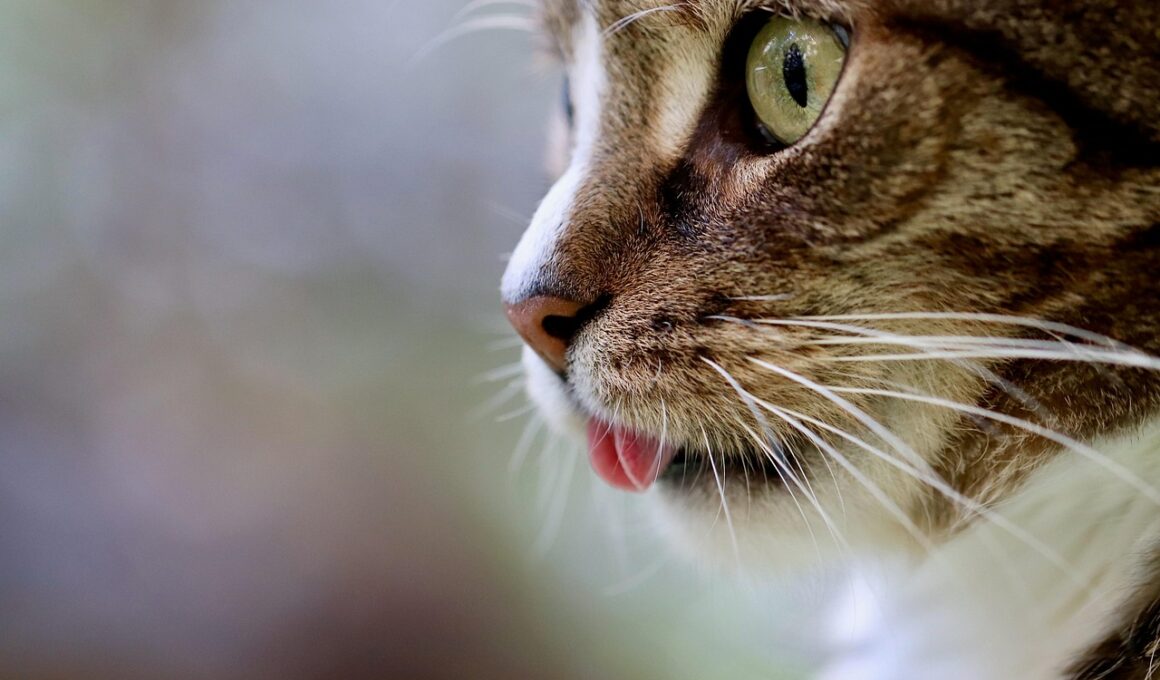Microchipping vs. Collars: Which is Safer for Cats?
Deciding between microchipping and collars to ensure your cat’s safety involves understanding their respective functions and benefits. Both methods serve to identify your cat, but they operate in distinctly different ways. Microchipping is a permanent solution, performed by a veterinarian who implants a small chip beneath the skin of your cat. This chip, which contains a unique identification number, can be scanned by shelters or veterinarians to return lost cats to their owners. On the other hand, collars are accessories that can either hold identification tags or serve decorative purposes. While they may help to identify the cat quickly when found, collars can also pose risks, including potential choking hazards or being lost. The various colors, sizes, and materials available for collars offer aesthetic choices, yet they significantly lack the permanence of microchips. Moreover, many accidents happen because collars malfunction or come off. Overall, each method has its pros and cons; therefore, combining both might provide the most help in keeping your pet safe.
The Benefits of Microchipping
Microchipping offers numerous advantages that significantly enhance the chances of reuniting lost cats with their owners. First and foremost, it serves as a permanent form of identification that won’t fall off or become damaged over time, as collars often do. Whenever a stray cat is found, shelters and veterinary clinics routinely scan for microchips, allowing for a swift return home. Furthermore, microchips are a cost-effective solution, requiring a one-time fee during vet visits, which helps alleviate long-term costs associated with lost pet searches. Additionally, the process itself is quick and relatively painless, often likened to getting a vaccination. Owners should ensure their registration information is accurate and up to date to maximize effectiveness. One drawback is that it doesn’t prevent your cat from getting lost; it merely increases the chance they will be returned if they do. Routine checks and regular vet visits can help to maintain this critical aspect of their wellness. In ensuring this form of security, pet owners invest in peace of mind that comes with knowing their pets have a reliable method of identification.
Collars are a traditional method of keeping cats identifiable and can certainly serve functional purposes. One significant advantage of collars is their ability to display visible identification tags that can quickly inform anyone who finds a lost cat about the animal’s ownership. These tags can contain several vital details such as the owner’s name, phone number, and even emergency contact information. Additionally, collars come in various materials, colors, and designs, allowing owners to choose styles that suit their cat’s personality. An appealing collar can additionally serve to enhance the cuteness factor of the feline, making them more adorable to strangers. Furthermore, breakaway collars are designed to dislodge when pulled, minimizing potential choking hazards significantly. This feature adds safety, particularly for cats that may romp in the outdoors. However, collars should be checked frequently for wear and tear to enhance their effectiveness. They require regular monitoring to prevent complications from wear or getting stuck on objects. These collars require particular safety measures and diligence from their owners to ensure that they serve their purpose without compromising the cat’s safety.
Combining Both Methods
The most effective strategy for ensuring your cat’s safety is to employ both microchipping and collars. This combination provides the best of both worlds and maximizes the chances of reuniting with lost pets. A microchip is a reliable method that guarantees lasting identification, while collars are overtly identifiable and can display crucial contact information. When found by a kind stranger, having a visible collar can expedite the identification process. Consequently, it can lead to returning home much quicker. Furthermore, using both methods guarantees that no matter what happens, you are equipped with the best measures to ensure your pet’s safety. It’s essential, however, to ensure that both elements are used effectively; this means keeping tags updated on collars and registering the microchip details properly. The synergy of the two systems not only enhances overall security but also broadens the chances of quickly locating and reuniting with your lost cat. Remember, even if collars can be lost or damaged, the microchip serves as a stable backup. Regularly reviewing both methods helps ensure your cat remains properly identifiable at all times.
One aspect to consider in the microchipping versus collar debate is the cost effectiveness of each method. Microchipping typically requires a one-time fee, which might make some pet owners apprehensive. However, considering the benefits of permanent identification, this cost is relatively minor when compared to the expenses of searching for a lost pet, including advertising, traveling, and the emotional toll that accompanies the loss. Collars may seem cheaper upfront, but they often need replacements and constant maintenance checks, adding up over time. In contrast, microchips, once implanted, require minimal upkeep. However, pet owners need to ensure that their registration records are consistently updated, especially after moving or changing contact information. The initial expense for microchipping might deter some pet owners, but they should consider the lifetime of benefits that accompany this permanent form of identification. Taking the proactive approach by using a combination of the two ensures that financial constraints do not compromise your cat’s safety and return. In the end, the investment in either option may save considerable emotional and financial costs in the long run.
Final Thoughts
In summary, choosing between microchipping and collars comes down to understanding the roles each method plays in cat safety. Microchips provide a permanent, reliable way to identify lost pets, while collars offer visibility and quick information to strangers. Ideally, pet owners should utilize both approaches to ensure their feline friends have the best chances of being reunited if lost. While collars provide immediate information, microchips afford a long-term solution that covers all bases. Maintaining and updating both systems is crucial for their effectiveness—a permanent chip requires a simple routine check, while collar tags need constant monitoring to ensure they are still in good condition. Owners who recognize that both methods offer unique benefits will be in a stronger position to protect their cats. More importantly, investing in pet safety yields peace of mind, allowing owners to enjoy their time with their beloved felines without the constant anxiety of loss. Strengthening your cat’s safety nets by using multiple forms of identification is thus the recommended path forward.
Educating oneself about the advantages and disadvantages of microchipping versus collars ultimately leads to better cat safety. While this discussion highlights some critical differences and effectiveness between the two choices, there’s no definitive ‘right’ answer. For optimal security, pet owners must weigh their individual needs against the possible risks that both methods may present. Understanding their cat’s behavior, environment, and lifestyle can aid in making a more informed decision regarding safety. Some cats may excel in environments where collars work best; others may thrive in safer surroundings where microchipping provides reassurance. The most secure environment combines both methods, providing a backup system for when one fails. Hence, thoughtful deliberation about your cat’s unique situation is critical to effective decision-making. Continuous advocacy for feline safety, therefore, involves not only ensuring identification measures but also educating fellow cat owners about their options. Through community shared knowledge, a more pet-friendly environment can be developed that prioritizes the safety and well-being of our feline companions. In doing so, cat owners must realize that proactive measures ultimately lead to better outcomes.
In conclusion, balancing the information gathered regarding microchipping and collars emphasizes the importance of both methods to ensure cat safety. Both methods play different yet complementary roles in identifying and returning lost felines. The permanent nature of microchips and the visibility of collars create a multifaceted approach to loss prevention. Owners must take the initiative to implement these safety measures, reinforcing the importance of responsibility that comes with pet ownership. By leveraging the strengths of both solutions, cat owners are not just choosing a method but creating a safety net for their beloved companions. Further exploring advancements in pet technology may offer even more options in the future. However, the fundamental tenets of proper identification remain steady. Regular communication with veterinary services and staying informed about best practices can reinforce these habits, enhancing the safety landscape for cats everywhere. In an unpredictable world, the knowledge that you have done everything possible to keep your furry friend safe is invaluable. A combination of microchipping and collars, complemented by educated choices, ensures that your feline is secure in home and adventure alike.


